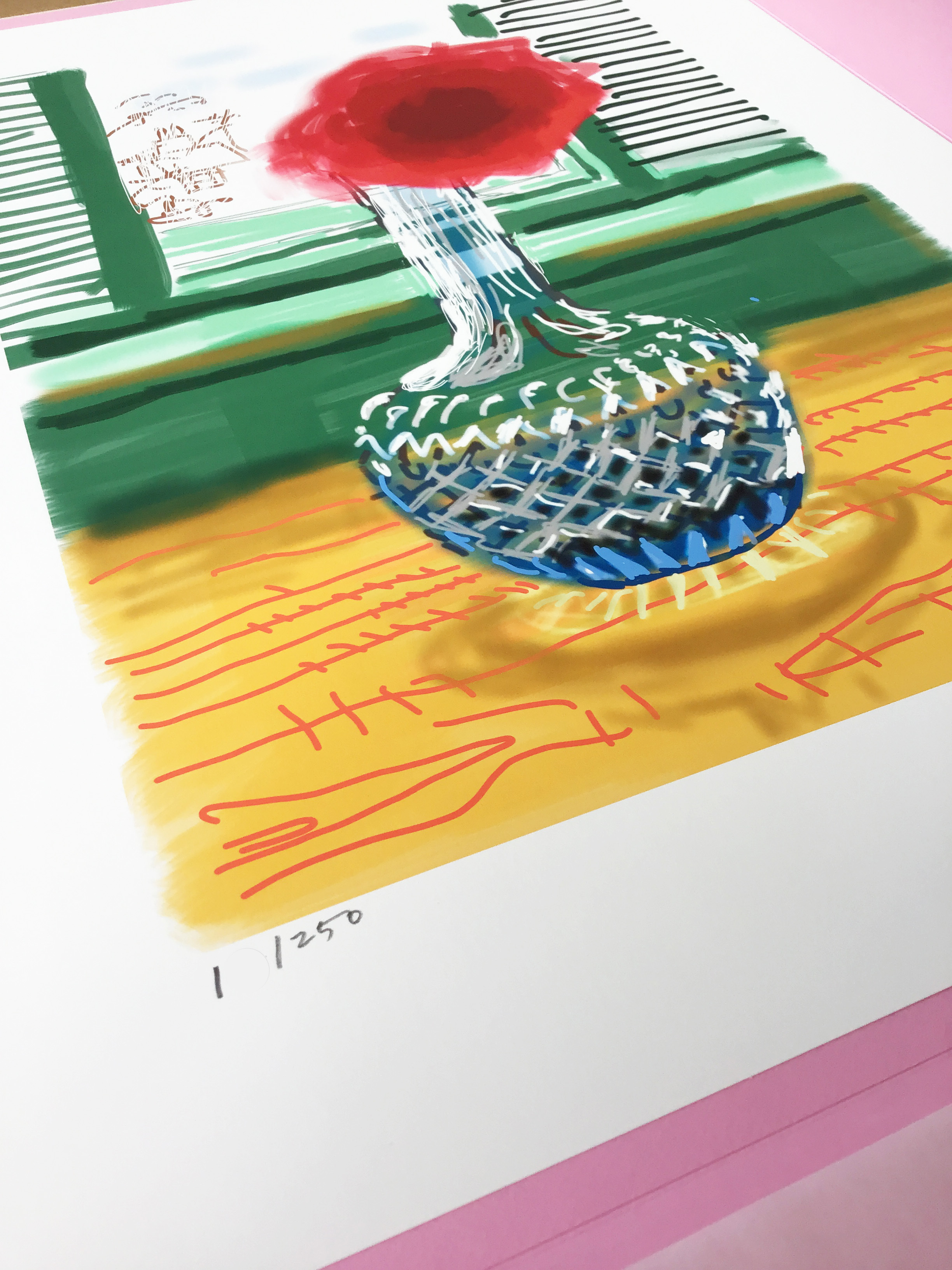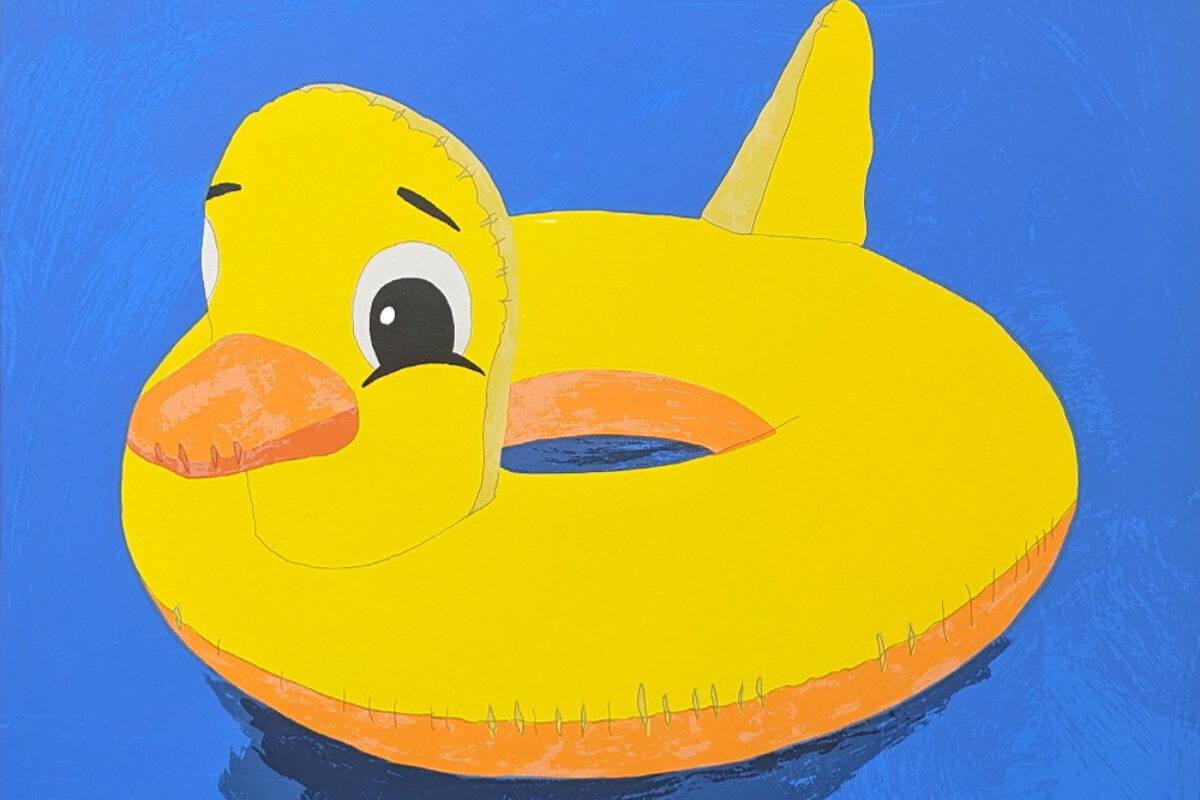Looking to collect affordable pieces or diversify your collection? Prints, multiples and editions could be the answer. From the lithographs, engravings and woodcuts of pioneering 1920s artists such as Picasso and Braques to the democratised silkscreen prints of Warhol and Keith Haring, the 20th century was an important time for the development of prints and editions. Artists found freedom in experimenting with different styles and techniques, and relished reaching a wider audience. The street art boom of the early 21st-century opened the art market to an even more diverse demographic, attracting counter-culture collectors for whom the limited nature of the work was of greater interest than the value. In many cases, the prints they collected less than two decades ago have moved firmly into the mainstream and are worth significantly more today. It wasn’t just works on paper that got revolutionary treatment over the last century though: Picasso also embraced ceramics, working with well-known pottery houses to create numbered editions which are increasingly collectable. In doing so, he paved the way for artists such as Jeff Koons, who regularly works with the Limoges pottery house Bernadaud to create miniature balloon rabbits, dogs, swans and monkeys.

Jeff Koons' famous Balloon Animals, porcelain with chromatic coating sculpture.
These days, the prints and editions market is thriving, with works by the most desirable makers – from David Hockney to KAWS – in much demand. Banksy editions continue to be some of the most coveted on the market, with many prints fetching more than £100,000 at auctions held over the last couple of years. But despite these high prices, print collecting can be an excellent way to buy pieces from artists who might otherwise be prohibitively expensive: objects and prints by big names such as Takashi Murakami and Yayoi Kusama are significantly cheaper than originals. If you’re looking to broaden your collection affordably, it’s also worth considering prints and editions by less well-known artists which will enable you to add new styles of art without significant outlay. Inspired to invest? Read on for our tips on how to collect prints and editions.

iPad Drawing No. 281, 23rd July by David Hockney, 8-colour inkjet print on archival paper, 2010-2019
Respect the Medium
Prints aren’t always second best – as soon as you start to look at them as art in their own right rather than copies of originals, a new world of collecting opens up. The world’s best printmakers are the unsung heroes of the art market, renowned for their craft. When Banksy opened his LA Show Barely Legal back in 2006, he employed Richard Duardo of Modern Multiples to make prints on the recommendation of Shepard Fairey. Duardo, who had a Masters in Fine Art from UCLA, had already worked with Hockney and Haring and was lauded for the rich colours he brought to prints. Richard Spence, who has worked with Jasper Johns, Keith Haring and David Hockney is so acclaimed for his etchings that he has his own Wikipedia entry: he quit commercial printing in the 1980s to dedicate himself to making. What you get when buying a limited edition print from such accomplished makers is a richness in texture and colour that you won’t find in anything mass produced. Creating a print is a partnership between artist and printmaker, with everything from the paper grade to the type of print carefully considered.
Learn the Lingo
It’s worth getting your head around the terminology involved in print buying, as small things can lead to big price differences. Often, the most desirable prints are artist’s proofs – the first few prints of the run which are used to check colour and clarity. Because there are so few of these and they often vary from the main edition, they are highly desirable to collectors. Next come signed original prints: the smaller edition (number of prints in the set), the better. The old advice to choose the lowest number available from the print run (ie 1/50 instead of 49/50) doesn’t apply anymore as techniques have moved on, but do make sure that your edition is numbered in this format as it’s a sign of legitimacy. Signed editions are usually worth more than unsigned pieces (an exception to this might be a very small print run). And despite what some less reputable sellers may tell you, posters are worth significantly less than prints and editions, and generally very hard to get authenticated (Pest Control, which authenticates Banksy works, does not offer the service for posters). Though editions are most commonly runs of prints, but they don’t have to be on paper: an edition can be a limited number of anything – from collages to sculptures (such as Banksy’s olive wood Watchtower, which was made in an edition of 15 and sold at Santa’s Ghetto, Bethlehem).

Grannies by Banksy, screen print on paper, 2006.
Play Detective
It’s a sad fact that there are forgeries of high value prints on the market, and buyers should bear that in mind when purchasing a piece. Research your artist of choice and learn about the ways in which they sign, stamp and number their prints: look out for things that indicate prints are authentic – from blind stamps (embossed marks on the paper naming the print studio) to certificates of authenticity. Some galleries even offer warranties on high value historic prints. Make sure you keep your gallery receipt and any certificate of authenticity when you buy, as you’ll need these to prove provenance yourself if you go on to sell in the future.
As a general rule, signed prints are more valuable than unsigned ones, though bear in mind that some artists use initials instead of a full signature and that’s ok too – what you need to look out for is consistency. If yours is the only print signed in a certain way by an artist, alarm bells should be ringing. Another way to check legitimacy is to cross reference the number on your chosen print with general information on the edition – were there definitely that many prints in the run; is there another copy of your exact number in circulation?

Start by Bridget Riley, screen print on paper, 2000.
Stay on the Ball
The cheapest time to buy a print is when it’s released: back in the early 2000s, Banksy’s earliest works were sold by Steve Lazarides for around £40 – now they are worth more than one thousand times that. Even if your chosen work doesn’t appreciate in quite the same way, you’re unlikely to lose money on a print you bought when it was produced if you look after it well. Sign up to gallery newsletters and follow your favourite artists and galleries on social media – that way, you’ll be among the first to find out about the latest releases: at Hang-Up, we’ve been producing our own editions since 2008 with artists including The Connor Brothers, Mark Powell and Tim Fishlock. You can see the selection we currently have available here. Bear in mind that editions by highly sought-after artists sell out fast, so you’ll need to be quick!
Take Care of the Work
Once you have bought your print, ensure it holds its value by storing or displaying it carefully. Prints on paper can be susceptible to sun or damp damage and are easily bent or torn. If you’re not planning to put your piece on the wall, make sure it’s stored away from heat or damp. If it’s going to have pride of place in your home, get your piece framed by a well-respected framer, ensure it’s not trimmed or cut and use UV protective glass. And always display bright colours away from direct sunlight, which can cause them to fade over time.
If you’d like advice on buying a print or edition, we are always glad to help. To get the ball rolling, you can get in touch with us here.
How To | Choose the Right Frame for Your Artwork
Collecting Guides
27 Sep 2020
Choosing the right frame for your artwork is important but can seem daunting with all the options available. In this blog we go through the various framing options available alongside some tips and tricks to help you make the decision of how to frame your piece.
ReadMore from Collecting Guides
Art Market
The Summer Window: 5 Reasons Why Summer is the Best Time to Buy Art
22 Jul 2025

Artists
Top 10 Selling Warhol Sets
15 Jun 2025 | 2 min read

Collecting Guides
Art Decoded: Screenprinting
7 Jan 2025 | 3 min read

Collecting Guides
How To | Gift Art
5 Dec 2024

Collecting Guides
How To | Buy Art from A Gallery
16 Jun 2023

Art Market
Sell Art | Five Reasons Why Galleries Are the Ideal Choice for Selling Art
24 May 2023 | 4 min read

Artists
The Lowdown on Investment: Tracey Emin
4 May 2023 | 8 min read
Collecting Guides
How To | Use Own Art at Hang-Up Gallery
10 Mar 2023 | 1 min read
Collecting Guides
How To | Pack Your Art
8 Aug 2022